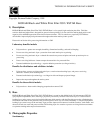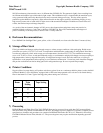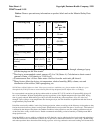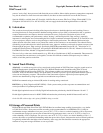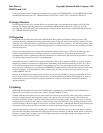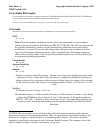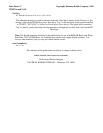
TECHNICAL INFORMATION DATA SHEET
TI2497 Issued 11-99
Copyright, Eastman Kodak Company, 1999
KODAK Black- and- White Print Film 2302 / ESTAR Base
1) Description
KODAK Black-and-White Print Film 2302 / ESTAR Base is a low speed, high-resolution print film. This blue-
sensitive black-and-white film is designed for general release printing. It is also useful for making both positive and
negative titles and RGB separations from electron beam recorders. 2302 is coated on a proprietary ESTAR base
which offers improved physical performance throughout the entire motion picture system.
Please refer to Section 6 for processing information on 2302
Laboratory benefits include:
• Polyester base—greater tear strength, durability, dimensional stability, and archival keeping.
• Process surviving anti-static layer—protection from static marks prior to printing.
• Process surviving anti-static layer—reduced dirt attraction to processed prints and static protection prior to
processing.
• Process surviving lubricant—better transport characteristics for processed film.
• Patented antihalation dye technology—superior halation protection (no fringes in titles).
Benefits for distributors and exhibitors include:
• Polyester base, process surviving anti-static layer, scratch resistant backing layer, and process surviving
lubricant—cleaner, more durable prints.
• Patented anti-halation dye technology—no fringes in titles and sharper projected image.
• Improved transport throughout the entire system.
Benefits for the archivist include:
• Polyester base—better archival keeping properties than current 5302.
2) Base
KODAK Black-and-White Print Film 2302 / ESTAR Base is coated on thin 0.0048 inch (120 micrometers) ESTAR
(polyethylene terephthalate) base, featuring a proprietary electrically conductive anti-static layer, a scratch resistant
backing layer, and a process surviving backside lubricant which remains with the film after processing, eliminating the
electrostatic attraction of dirt particles to the processed print even at very low relative humidity. A very thick polymeric
backing layer coated on top of the anti-static layer provides improved resistance to backside scratches, cinch marks, and
abrasion of both raw stock and processed film. The backing layer also contains a process surviving lubricant and matte
to optimize winding and transport characteristics.
3) Photographic Properties
Sensitometry



